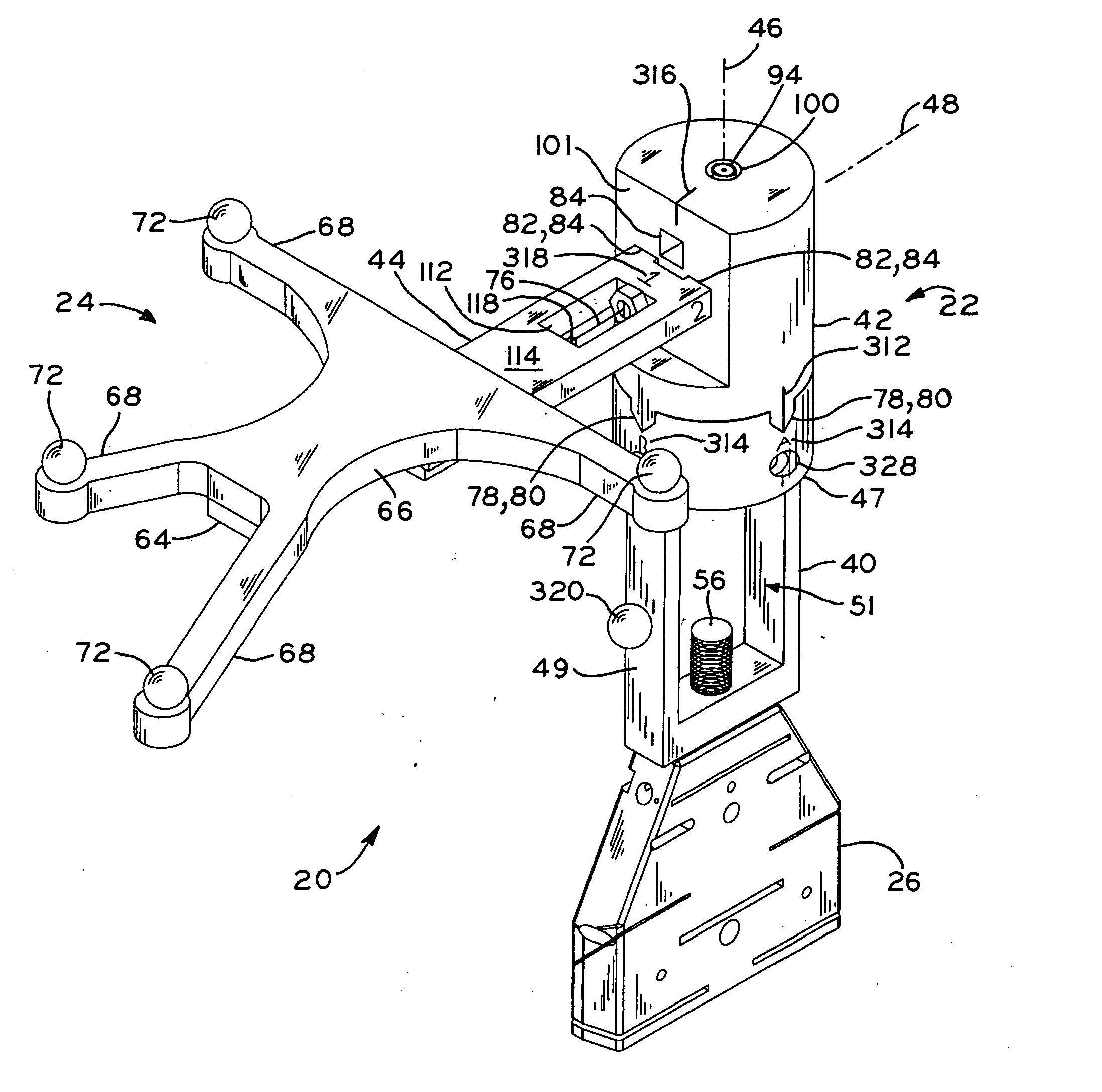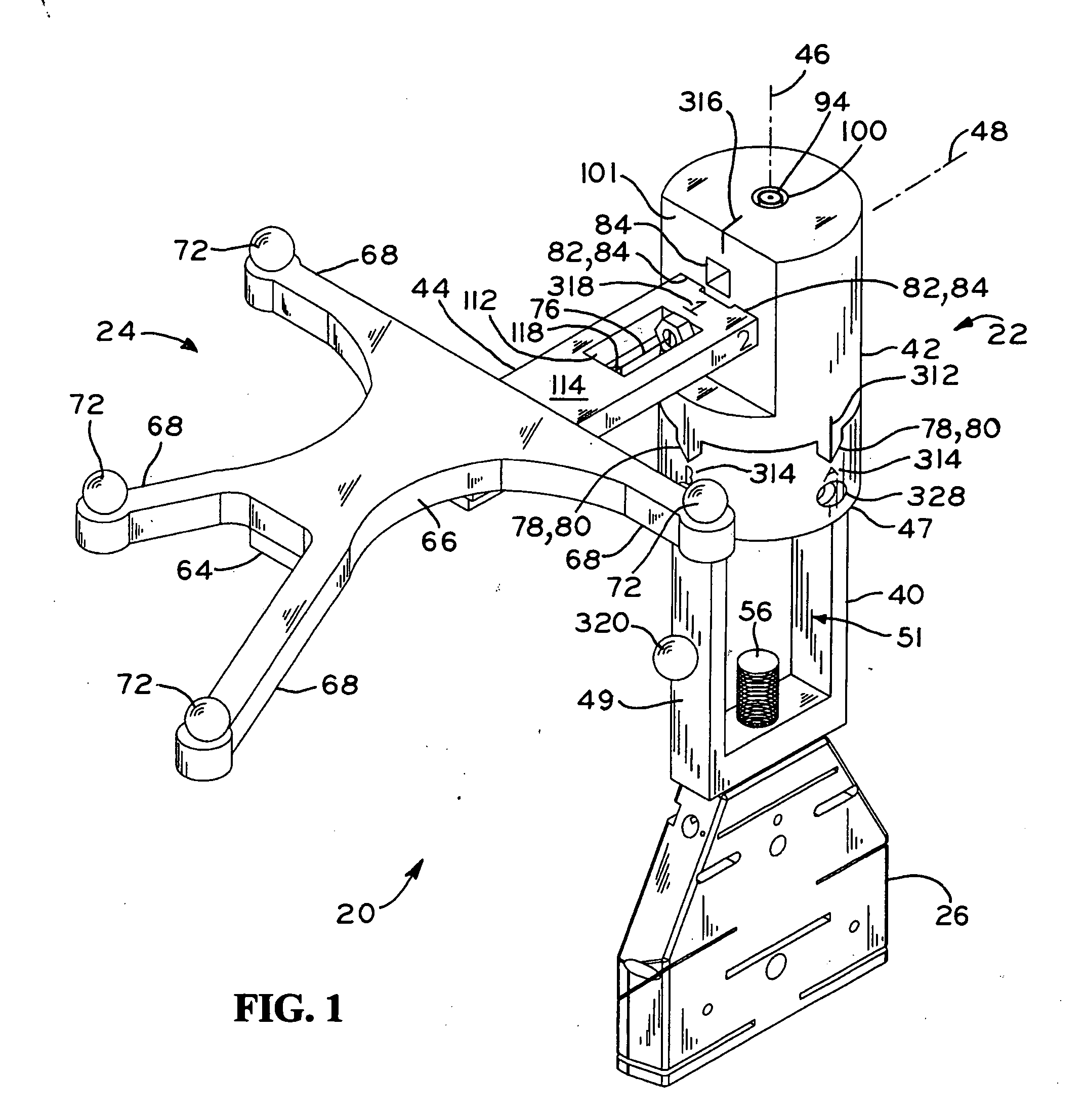Universal support arm and tracking array
a technology of universal support and tracking array, applied in the field of computer assisted navigation, can solve the problems of unsuitable surgical instruments so equipped, difficult to accurately define the position of instruments, and difficult to accurately determine the geometry of the combination
- Summary
- Abstract
- Description
- Claims
- Application Information
AI Technical Summary
Benefits of technology
Problems solved by technology
Method used
Image
Examples
Embodiment Construction
[0044] Referring initially to FIG. 1, an exemplary tracking apparatus 20 according to the present invention includes support arm 22 for coupling tracking array 24 to surgical instrument 26. Support arm 22 displaces tracking array 24 from instrument 26, for example for placing array 24 within the field of view or detection of position sensing unit 28 of computer-assisted navigation system 30, shown in FIG. 3. Additionally, support arm 22 allows positional adjustment of tracking array 24 relative to instrument 26, thereby providing adjustment of the geometry between instrument 26 and array 24. Instrument 26 may be any instrument used with navigation system 30, for example a cut guide for orthopedic implant surgery, or a saw, reamer, drill, or other surgical instrument.
[0045] Referring to FIG. 3, operating room arrangement 32 includes computer-assisted navigation system 30, position sensing unit 28 for detecting the position of tracking array 24 of tracking apparatus 20, and patient 3...
PUM
 Login to View More
Login to View More Abstract
Description
Claims
Application Information
 Login to View More
Login to View More - R&D
- Intellectual Property
- Life Sciences
- Materials
- Tech Scout
- Unparalleled Data Quality
- Higher Quality Content
- 60% Fewer Hallucinations
Browse by: Latest US Patents, China's latest patents, Technical Efficacy Thesaurus, Application Domain, Technology Topic, Popular Technical Reports.
© 2025 PatSnap. All rights reserved.Legal|Privacy policy|Modern Slavery Act Transparency Statement|Sitemap|About US| Contact US: help@patsnap.com



